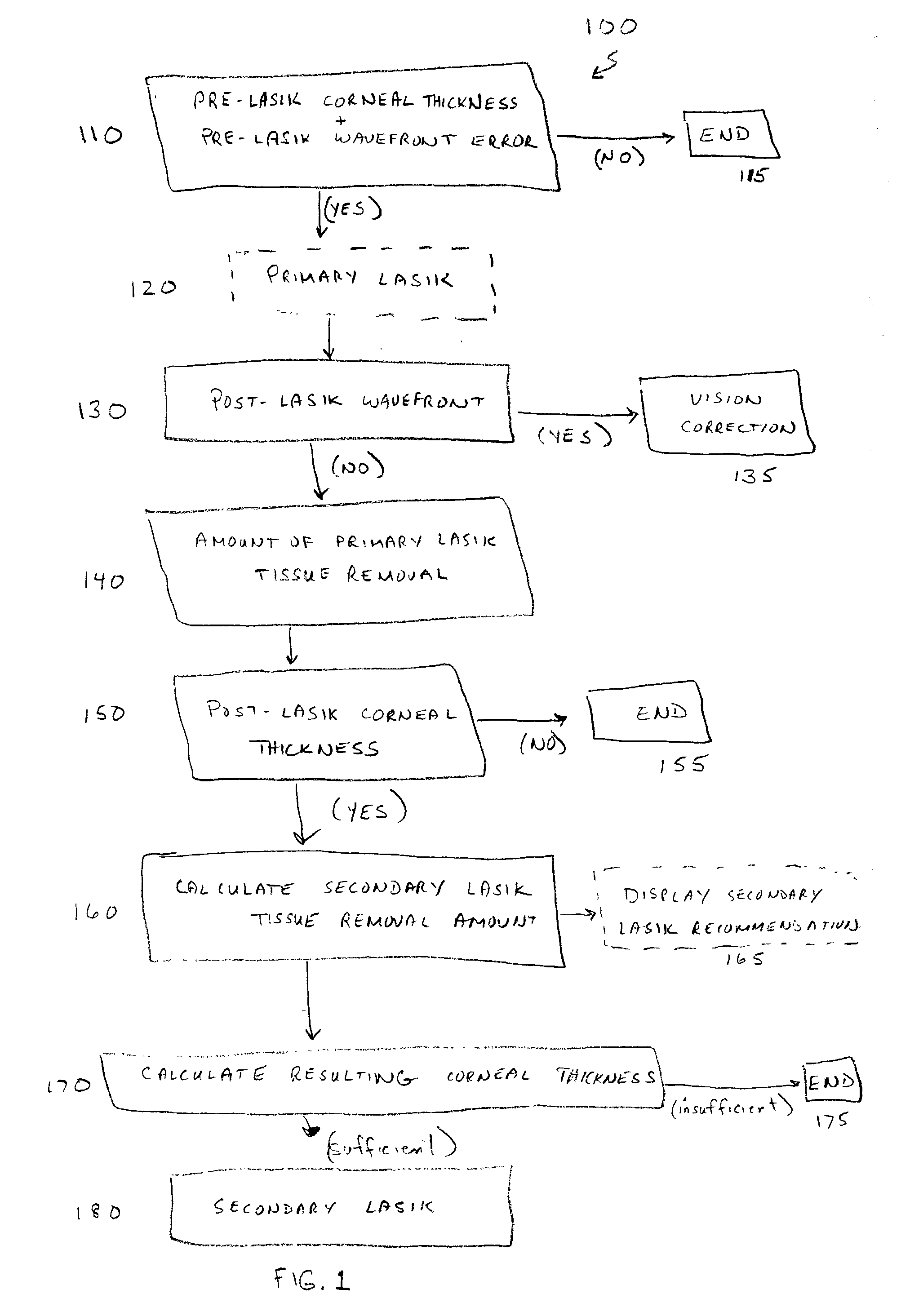System and method for evaluating a secondary LASIK treatment
a secondary lasik and safety evaluation technology, applied in the field of vision correction, can solve the problems of decentered ablation, misalignment of the eye, and inability to achieve the desired vision correction goal of the initial lasik procedure in all patients,
- Summary
- Abstract
- Description
- Claims
- Application Information
AI Technical Summary
Problems solved by technology
Method used
Image
Examples
Embodiment Construction
[0016] A method for evaluating the safety of a prospective secondary LASIK procedure is set forth in the blocked diagram in FIG. 1. The method 100 includes the steps of obtaining a pre-LASIK thickness measurement of the cornea and a pre-LASIK wavefront measurement of the patient's eye at block 110. The corneal thickness measurement data will preferably be obtained through topography and pachymetry measurement while the wavefront measurement is preferably obtained with the use of an aberrometer. Both of these types of devices are well-known in the art and are commercially available, therefore, they require no further description for an understanding of the instant invention. Assuming the pre-LASIK diagnostics do not contraindicate a primary LASIK procedure, which would then require alternative action as shown at 115, a primary LASIK procedure 120 is performed. It is to be noted that the primary LASIK procedure referred to herein is not in itself a part of the instant invention but is...
PUM
 Login to View More
Login to View More Abstract
Description
Claims
Application Information
 Login to View More
Login to View More - R&D
- Intellectual Property
- Life Sciences
- Materials
- Tech Scout
- Unparalleled Data Quality
- Higher Quality Content
- 60% Fewer Hallucinations
Browse by: Latest US Patents, China's latest patents, Technical Efficacy Thesaurus, Application Domain, Technology Topic, Popular Technical Reports.
© 2025 PatSnap. All rights reserved.Legal|Privacy policy|Modern Slavery Act Transparency Statement|Sitemap|About US| Contact US: help@patsnap.com



